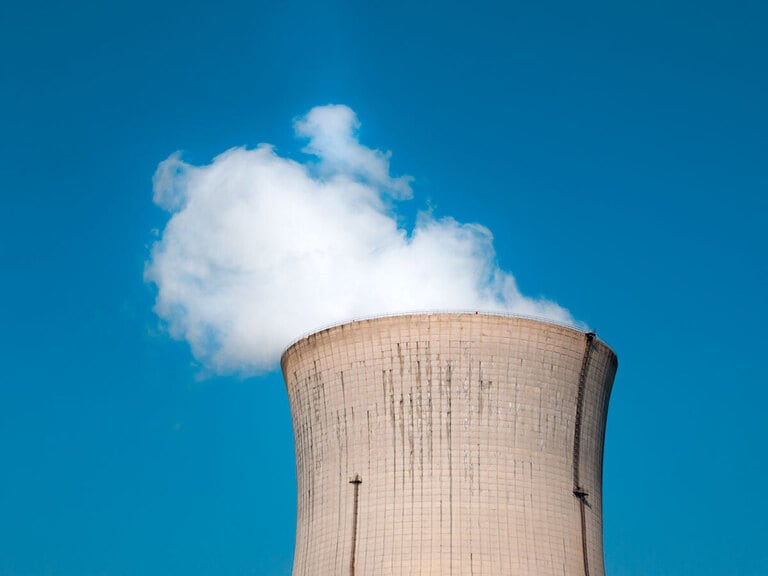Conventional military technology — tanks, jet planes, ships — has reigned supreme since World War II. But its time may be over. According to Andrew Ye, Investment Analyst at Global X ETFs, “in terms of where the budgets are increasingly being allocated, we have definitely seen a shift toward newer technologies.”
Global military spending reached a record $2.72trn in 2024. The allocation as much as the amount attests to the changing focus of defense expenditure. “We’ve seen a big uplift in the percentage of the budget going towards R&D,” Ye notes. “In 2014, it was around 11%. Last year, it was around 17%.”

What are the new technologies that governments are racing to develop?
Key Trends
These technologies fall into four broad categories.
The first aligns with a process that is currently revolutionizing commercial and public sectors alike: using artificial intelligence (AI) to improve efficiency and outcomes.
Ye points to Project Maven in the US, which has enlisted companies like Palantir [PLTR] to use machine learning “to go through significant volumes of data using satellite imagery, and accelerate targeting decisions on the battlefield.”
The same efficiency gains that are revolutionizing white-collar work in fields as disparate as design and software-as-a-service could help streamline defense operations. “You are seeing a merging of what’s happening in the consumer world and the military applications.”
The second trend aims to improve both efficiency and accuracy in the heat of battle through better communication systems. “Probably the easiest way to think about it is as a nervous system on the battlefield,” Ye explains. This involves “linking up a lot of parts of defense that previously were quite fragmented… making sure there is good communication software, systems and infrastructure to allow all these different parts of a country’s defense to communicate.”
The third trend develops a technology that has become essential to warfare in recent years, playing a central role in everything from the US’ anti-terror operations to the Russia-Ukraine War: drones. Going beyond surveillance and targeted strikes, drones are incorporating key software innovations. “Increasingly, we are seeing AI-powered systems that are able to swarm a target in large numbers.”
The fourth trend is in direct response to a rise in the use of drones and other remote weapons, such as missiles. It involves “the integration of more sensors, more data and radar technologies to be able to identify these threats and intercept them in real time.”
Space is another key area of expansion. “Space is definitely the next frontier, if it isn’t already here,” Ye explains. With satellites increasingly key to communication networks and reconnaissance operations, there is “a movement toward owning a lot of low orbit capacity”.
With more and more capital put toward R&D, the results can seem close to science fiction. The use of technology to enhance soldiers on the battlefield could be the next step, whether that means humanoid robots or mechanized armor. “We could see something like an Iron Man type of suit” in the near future, Ye notes.
New Actors
As the range of technologies involved in defense have expanded, so has the range of players in the industry. Ye notes that, in recent years, public entities have increasingly begun to rely on smaller private players for increased agility and exposure to innovation. Many governments and defense bodies have also developed their own innovation-focused units, such as AFWERX, the innovation arm of the US Air Force.
The way contracts are awarded has changed. Traditionally, defense contracts have gone primarily to “highly focused, pure-play defense tech companies” for design and manufacturing purposes. In the past decade, however, there has been an uptick in Other Transaction Agreements (OTAs: legal agreements with federal governments that are not considered cooperative agreements, grants or standard federal contracts. The increase in the number of OTAs “shows that a lot of these defense buyers are going beyond the traditional legacy procurement types of processes and into relatively faster-moving types of contracts,” Ye says.
Additionally, the sector has seen more partnerships between legacy defense contractors and smaller, innovation-focused players — a mutually beneficial process. “You are seeing a number of examples where these large incumbents are either partnering with these pure plays in defense tech, or they are acquiring them at an earlier stage to get access to technology, which is helping to de-risk them in some way as well.”
This process comes with challenges. Ye notes that the primary obstacle is compatibility. “Increasingly, part of the challenge is that a lot of the legacy equipment hasn’t been designed to be retrofitted.”
That is changing, however. Ye notes that public and private players alike have committed to “making sure the next generation of tanks that are developed are able to be upgraded over time.”
With greater alignment between commercial and defense technology, investors can expect the industry to continue its growth trajectory. “The defense sector has really been energized on a global scale,” Ye says. “We’ve seen defense contractors report record backlogs in terms of orders,” pointing to increased profit for years to come.
Continue reading for FREE
- Includes free newsletter updates, unsubscribe anytime. Privacy policy





